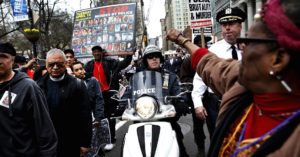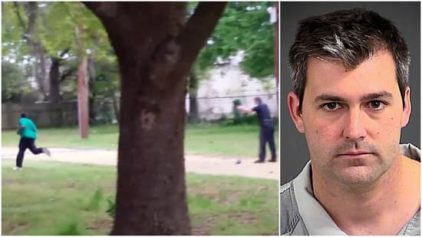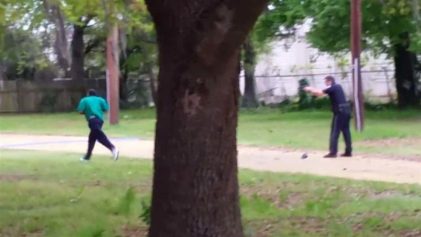
While there were months of sustained protest in places like Ferguson and New York in the fall and winter following the failure of grand juries to indict police officers in the deaths of Eric Garner and Michael Brown, they slowly dissipated. But recent events such as the deaths of Walter Scott in North Charleston and Eric Harris in Tulsa have brought them once again to life, as protesters ask in anger and frustration when the killing will stop.
It is fair to ask whether the message of the protests are reaching the consciousness of America’s police forces, since each week seems to bring reports of another unarmed person who was killed in a hail of bullets.
Earlier this month, the ACLU released a report showing that since the White House released its task force report on 21st century policing at the beginning of March with much fanfare, American police officers shot and killed 115 people across the United States in the month of March.
The 115 people killed in those 31 days averages out to more than three people per day who fell victim to officers’ bullets. Because departments aren’t required to submit data on police-involved killings—one of the recommendations of the task force is that the reporting mechanisms be improved—the ACLU took the time to count the shootings using the Google search engine.
“Too many of this [last] month’s victims fit a profile we know all too well — unarmed men of color, some of whom have psychiatric disabilities. Victims like Charly Keunang in Los Angeles, Tony Robinson in Madison, Wisc., Anthony Hill in Dekalb County, Ga. and Brandon Jones in Cleveland, confirm that the problems with policing are national in scope,” said Kanya Bennett, Legislative Counsel for the ACLU in Washington, in a piece on the ACLU website accompanying the report’s release.
The numbers in January and February were only slightly better—91 killed in January by police and 85 killed in February, according to the ACLU.
“This isn’t a problem concentrated in a few rogue police departments. Even those police departments with the best of intentions need reform. Take for example the Department of Justice report that Philadelphia police shot 400 people — over 80 percent of them African-American — in seven years. This is in a city where the police commissioner is an author of the very same White House task force report calling for police reform,” Bennett said, referring to Philadelphia Police Chief Charles Ramsey, chairman of the White House Task Force.
Bennett noted that the police departments were much more likely to use excessive and deadly force against people of color, particularly people with psychiatric disabilities.
“Jaywalking and selling individual cigarettes should not result in death, nor should failing to take [psychiatric] medication,” Bennett said.
Protests yesterday resulted in at least two dozen arrests across the country, as demonstrators made their presence felt by blocking highways and swarming police precincts.
Some of the protest movements have had to step up fundraising efforts because many protesters languished in jail following the fall protests because they didn’t have money to make bail.
In New York City, an estimated 250 activists marched across the Brooklyn Bridge while holding up signs that read “Stop murder by police” and “Stop killer cops,” according to Reuters, which reported that some of the 12 people arrested appeared to be as young as high school students. There were long traffic delays as the demonstration, organized by the Stop Mass Incarceration Network, crossed the bridge and a handful of protesters scuffled with police on the other side.
In Los Angeles, a group of about 100 protesters stopped on Metro Rail tracks and refused to obey police orders to disperse, resulting in 15 arrests.
In northern California, a police station in San Francisco was surrounded by more than 100 protesters who attempted to disrupt a City Hall meeting taking place. They disrupted rush hour traffic on the Bay Bridge to Oakland, resulting in six arrests.
Protesters in Oakland demonstrated outside the Oakland Police Department, then moved en masse onto Interstate 880.
In Madison, where unarmed Black teen Tony Robinson Jr. was killed last month by a white people officer, a group of mostly high school students numbering at least 100 blocked a major traffic thoroughfare to express their anger.
Meanwhile, the 250-mile march from New York City to Washington, DC, organized by Justice League NYC is ongoing, scheduled to reach the National Mall on April 21.


